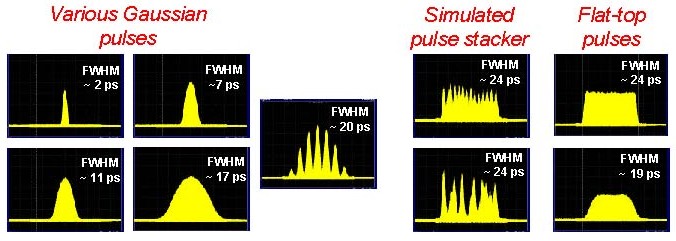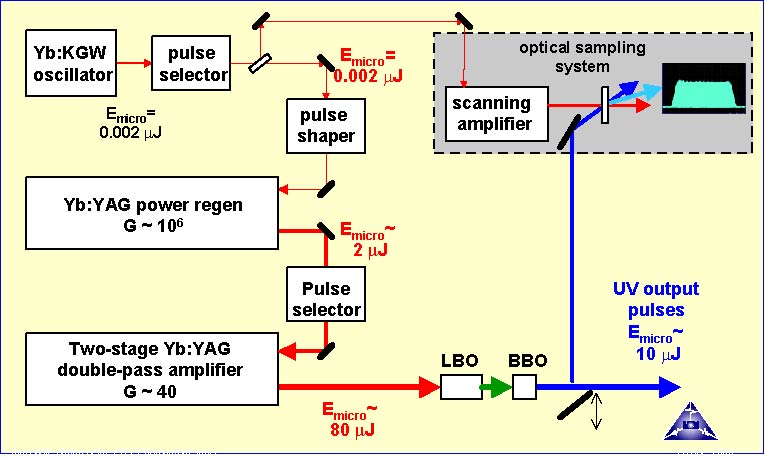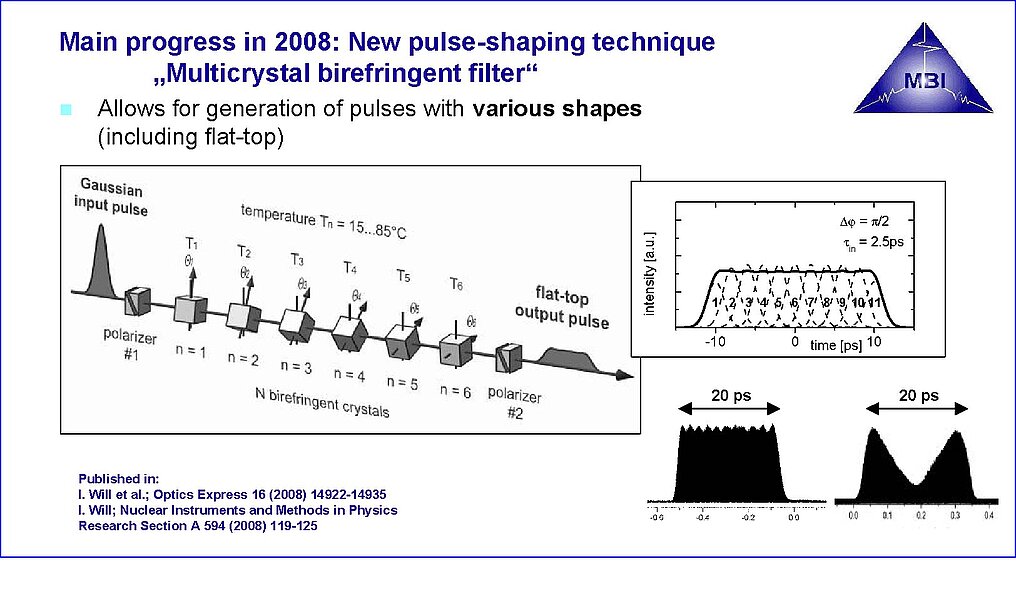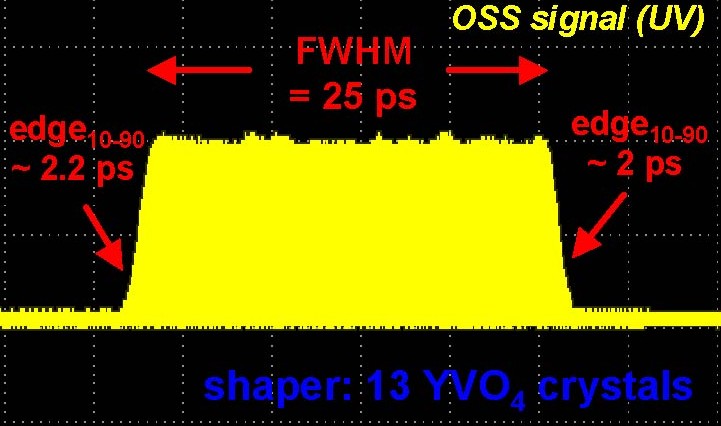4.1 Implementation of Lasers and Measuring Techniques
Project coordinators: I. Will , F. Furch , M. van Moerbeck-BockFlat-top UV pulses for PITZ, FLASH and the upcoming XFEL at DESY Hamburg
We have recently developed a photo injector drive laser generating trains (bursts) of UV pulses of programmable shape, in particular of flat-top pulses with sharp rising and falling edges. It is expected, that the emittance of the generated electron beam can be significantly improved by appropriately shaping the laser pulses.
The present laser developed at the MBI for the PITZ installation at DESY Zeuthen allows for a large variety of the shape of the generated pulses. The figure below shows some of them:
The laser system generating the desired trains of shaped picosecond UV pulses consists of the following components:
- A femtosecond Yb:KGW laser oscillator, that is precisely synchronized to the RF master oscillator of the linear accelerator,
- the pulse shaper,
- a chain of Yb:YAG amplifiers,
- a wavelength converter that converts the infrared laser pulses of the laser to the ultraviolet (4-th harmonics),
- a so-called optical sampling system for measuring the pulse shape by cross correlation,
- a computerized control system that allows for full remote control of the laser.
The actual shaping of the pulses is accomplished by a multicrystal birefringent filter located before the entrance of the amplifier chain of the laser system. The pulse shaping process can be explained by a coherent staking of 14 replicas of the short input pulse. In order to control the mutual phase of these replicas precisely, the temperatures of the 13 birefringent crystals of the shaper are tuned with 0.01° C accuracy.
The described laser developed at the MBI is used since summer 2008 for driving the photo injector of the PITZ installation at DESY Zeuthen. During 2009, the laser was further improved. In particular, the number of generated pulse shapes was increased.
We expect that with an optimized pulse shape the emittance of the electron beam will be reduced to a value below 1 pi mm mrad in summer 2010. This low emittance is required for the electron beams of the upcoming XFEL at DESY in Hamburg. To reach that emittance, DESY is presently building a new RF photo injector and an improved RF system.



